I tried two incredible MacBook Pro alternatives running Windows 10 - here's how they compare
The Yoga and Vaio are admirable performers, both more than capable of tackling heavy work.

Given that the Yoga has double the memory, I couldn’t make a fair side-by-side comparison. The Vaio held its own even with that handicap, though, thanks in large part to its supercharged processor.
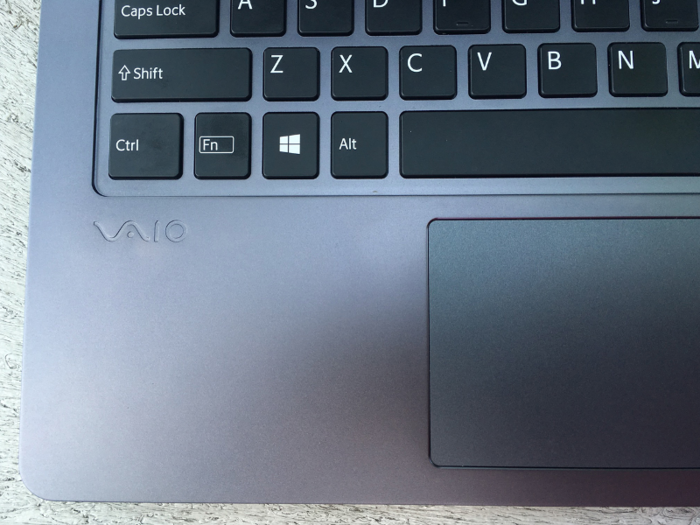
More specifically, the Vaio houses a 28-watt processor. That’s more powerful than the 15-watt chips most others use. The only other laptop to use a 28W chip is, you guessed it, the MacBook Pro. But again, that’s using last year’s processors.
So, if you bump the Vaio up to 16GB of RAM, it’s not only a tier above the Yoga, it’s one of the few Windows machines that can compete with, and even best, the highest-end MacBook Pro.
To get that, though, you need to shell out $2,400. That’s $300 more than the top-tier Yoga, which is still plenty capable in its own right. (But it's still $100 less than the best MacBook Pro.)
It also doesn’t help that the Vaio’s fans can sound like a small space shuttle every now and then.
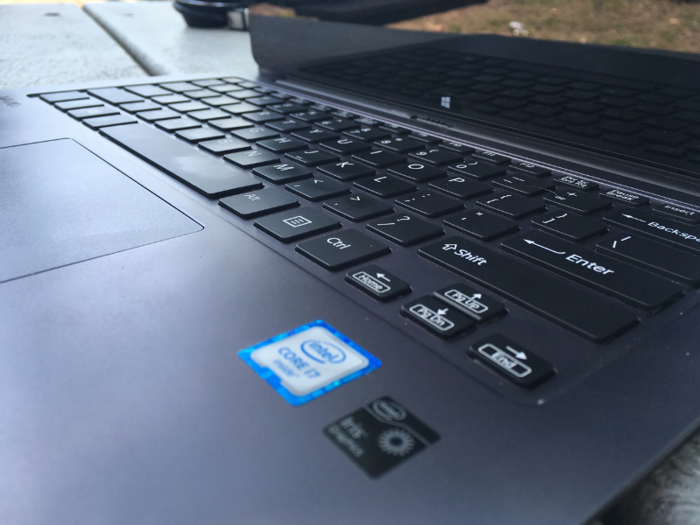
This was a problem for me with two separate review units; it wasn’t frequent, but when you push it, it goes into liftoff for a few moments.
Nevertheless, if you absolutely need the most power, the Vaio is your powerhouse.
As for the Yoga, remember that you’ll get less performance as you go down in price.
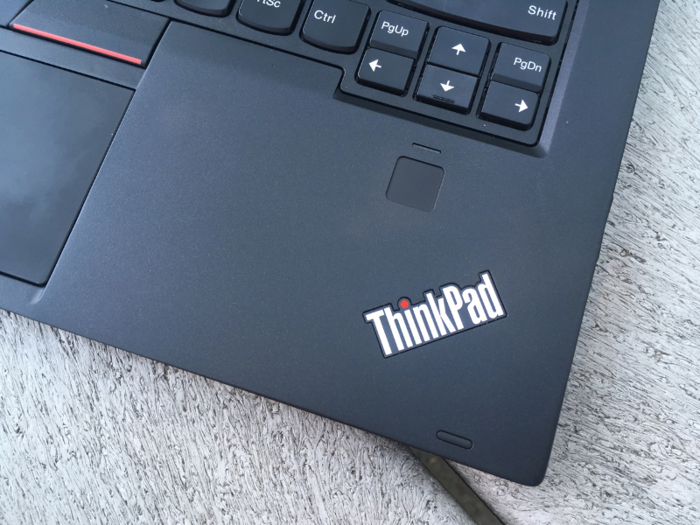
The entry-level, $1,400 model has a Core i5 processor, 8GB of RAM, and a paltry 128GB of storage. If you need power user performance, I’d step up to my configuration.
Both the ThinkPad X1 Yoga and Vaio Z Flip are mature, well-made machines, though the latter’s a bit more distinct.
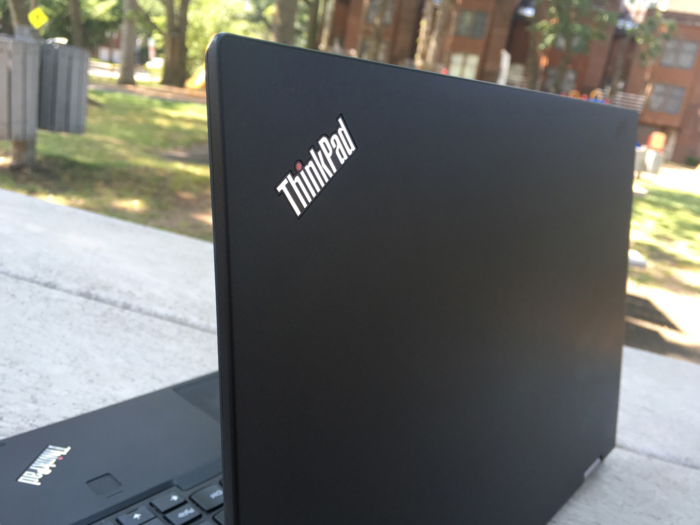
If you’ve ever seen a ThinkPad laptop, you’ve seen the X1 Yoga’s smooth, black matte finish before. The boxy look isn't flashy, but it fits the professional mold well. It’s also sturdy, and came up no worse for wear after being stashed in my backpack for a few trips.
The Vaio, meanwhile, puts more emphasis on aesthetics. Its cool, aluminum finish feels like it belongs on a laptop as expensive as this. It’s solidly built, and its creased, dark grey lid comes off as understated yet distinct.
That’s one thing I like about both devices, really: They’re each doing their own thing, not aping the MacBook’s success.
Another thing that’s easy to like is how thin and light they are. The Yoga is a pinch lighter — at 2.8 lbs, versus the Vaio’s 2.96 lbs — even though it’s bigger, while both come in at a fairly svelte 0.66 inches. Neither are a burden to carry, in other words. And technically, they’re both more compact than the MacBook Pro.
Like many premium Windows notebooks, both the Yoga and Vaio are designed to be flexible and welcoming to touch controls. This is a major difference from Apple’s design philosophy, and often times, a big advantage over the MacBook Pro.

Now, for me, having a touchscreen means little when it’s time to do work. Using a web browser or Photoshop with your fingers isn’t fun, and Windows 10 does an iffy job of laying out its settings in tablet mode.
But the freedom is appreciated. When I want to stream YouTube or WatchESPN, it’s nice to flip my laptop around and turn it into a mini TV, instead of reaching for the tablet I normally use the same way. You have to look at as an added bonus: Windows 10 has a lack of apps built for touch, but since it works fine the normal way, that’s not so bad.
Both devices also come with styluses, which is good if you’re a designer or just don’t want your fingers to smudge up your screen. They’re both comfortable and accurate, though the Yoga’s stylus seemed a bit smoother in operation. The Vaio also lacks a slot for holding its pen, which could get annoying.
Each device lets you access that touchscreen in different “modes.”
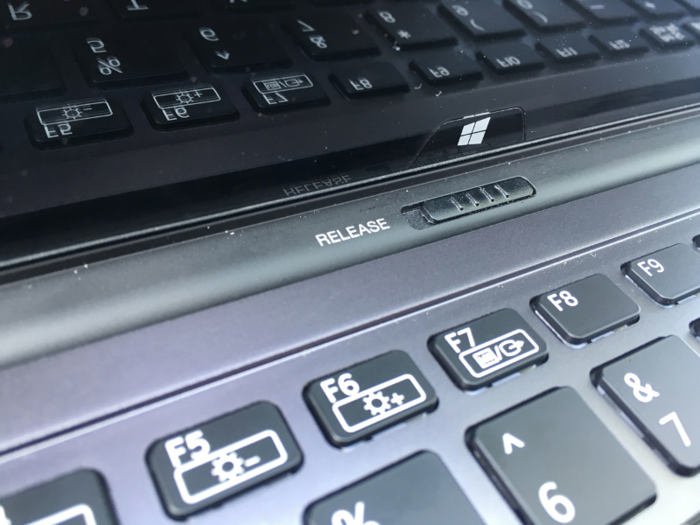
I preferred the Yoga’s setup — if you want to turn it into a monstrous 14-inch tablet, just bend it back. When you do that, the keyboard becomes totally flush and sits flat. Again, Lenovo’s done this before, but it feels natural, and it works.
The Vaio, on the other hand, is a little more complex. Below its display is a “release” switch; hold it, and you can flip the screen 180°. (Hence the name.) This isn’t much of an inconvenience, and I can appreciate the engineering that went into building that without turning the rest of the machine into a mess, but the Yoga’s method just comes easier.
Of the two, the Yoga more of an out-and-out business laptop. As such, it packs more ports and connectivity options.

MacBooks, these are not. Despite its thinness, the Yoga includes three USB 3.0 ports, an HDMI port, a mini DisplayPort, a Kensington lock, microSD and SIM slots, a docking port, and other things you might one day need. It’s more plentiful than the Pro, to put it one way.
The Vaio isn’t as stacked, though it does include a couple of USB 3.0 ports, an HDMI port, and an SD card slot for extra storage.
The noticeable absentee here is USB-C. You should be able to live with that for the time being, but it is the future — especially if the new MacBook Pro loads up on them as rumored. For now, though, I didn’t miss it.
Neither device includes much unwanted bloatware, thankfully, but they aren’t completely clean. Aimless third-party apps like Flipboard and Candy Crush can be uninstalled easily enough, at least.
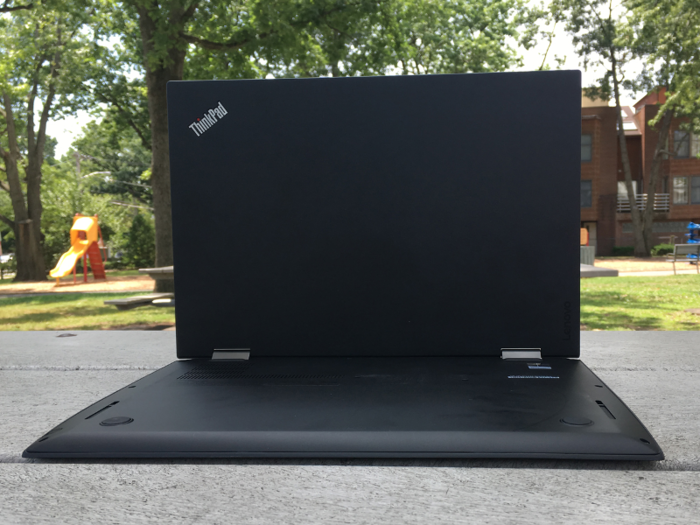
(That said, it’s worth noting you can buy a bloat-free Signature Edition of the Vaio from the Microsoft Store.)
Windows 10 still has its share of annoyances — having to frequently fiddle with text size on high-res displays like these, not being able to uninstall all of Microsoft’s default apps, the Edge browser’s general okayness — but taken as a whole, it’s easy to get along with. Unless you’re entrenched in the world of Apple, you won’t miss much coming here from macOS. (Though we’ll revisit that in a couple months.) If you’re an Xbox owner, it might not even be a contest.
The Vaio's display is the standout. It holds its own against that of the MacBook Pro, and then some.
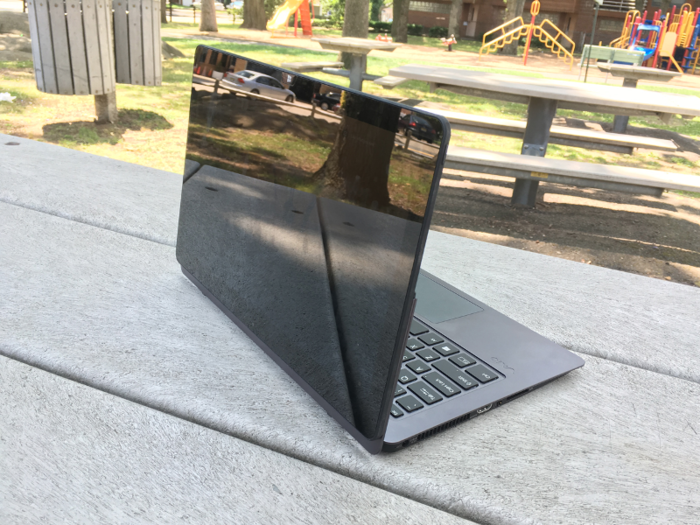
I can’t say it’s outright better than Apple’s panel, but it’s still pretty fantastic. It’s a 13.3-inch IPS screen, with a 2560 x 1440 resolution. That’s technically less dense than 13-inch Pro’s “Retina” (or, 2560 x 1600) display, but any difference in sharpness is barely noticeable. Beyond that, it gets vibrant colors, good viewing angles, and excellent brightness.
That said, it can’t get quite as bright as the Pro, and its glossy surface is a fingerprint magnet. Still, it’s a treat.
The same can generally be said of the Yoga's larger, 14-inch display, too, though to what extent depends on which configuration you buy.
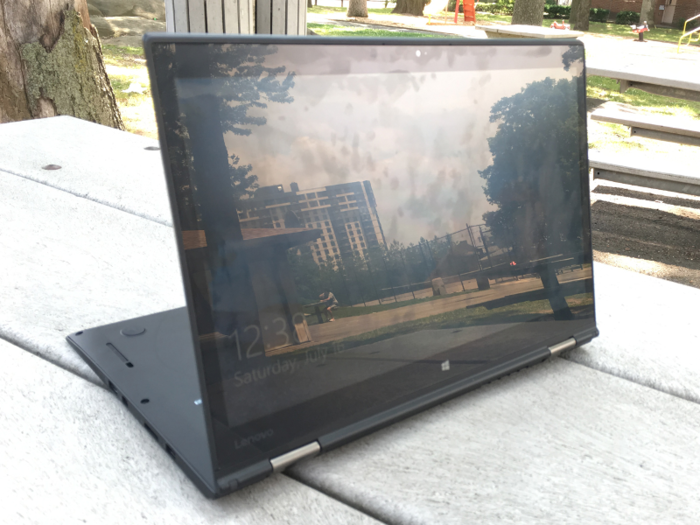
My test unit used an IPS panel with the same resolution as the Vaio. A cheaper model has a less sharp 1080p panel, while another comes with an OLED display, which’d theoretically provide colors that pop a bit more.
With this unit, though, the Yoga still produces accurate colors and even better viewing angles. Its major weakness is brightness; it’s a ways behind the Z Flip at its max, which makes it harder to read in the sun. Its semi-glossy material attracts its share of smudges, too. But again, it’s firmly on the “good” side of the display spectrum.
The Yoga’s keyboard is a joy to use. The Vaio’s, not so much.

If there’s one thing Lenovo knows, it’s keyboards. Time and again, its ThinkPad line nails it, and the X1 Yoga is no exception. It’s too thin to be the most pleasing of the bunch, but it’s still fast, well-spaced, and highly comfortable. With a benchmark like the 10FastFingers typing test, I consistently put out more words per minute than usual, with less errors. I’d take it over the MacBook Pro’s flatter layout any day.
The Vaio’s keyboard is closer to that of the MacBook Pro, and while it’s not bad, it’s can’t compete with the pure pleasure of the Yoga. It’s laid out well, and it’s nicely smudge-resistant, but its keys take too little force to press, which makes them feel too stiff. On that same typing test, I made more mistakes than I’m used to, at a slower rate to boot.
It’s a similar story with their respective trackpads, though both reinforce how far ahead Apple is in that regard.
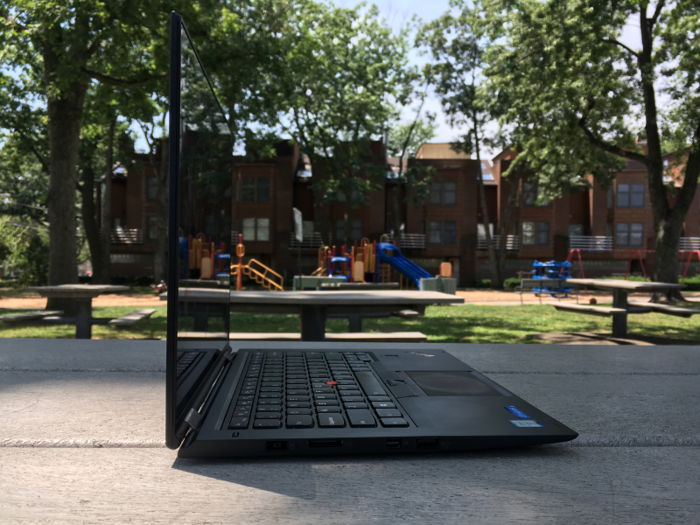
The Vaio's trackpad can get a bit jumpy on occasion, while the Yoga's is both smoother to the touch and more responsive to gestures and sensitive movements. (It also comes with Lenovo’s usual little red “pointing stick,” if you prefer that.)
Both devices aren't as precise as the MacBook Pro’s trackpad, though. Even with the Yoga, there’s always some sense that you’re dragging the device by the tail to make it to do what you want. This has long been a bugbear for Windows machines, and even on some of its better models, it’s still not a regular guarantee.
Battery life is isn’t a problem in either case, though neither can really touch the MacBook Pro’s longevity.

Both machines got me through the majority of my workday without much trouble, but the Yoga seems to have the slight edge. It usually petered out around nine hours, while the Vaio lasted closer to eight. That’s good, but with the Pro pushing closer to 12, it’s all relative.
These are decidedly high-end laptops, and as such neither the Yoga nor the Vaio is cheap. Still, if you can pay the premium, both do enough right to be worth it. Per usual, which one is “best” depends on your needs.
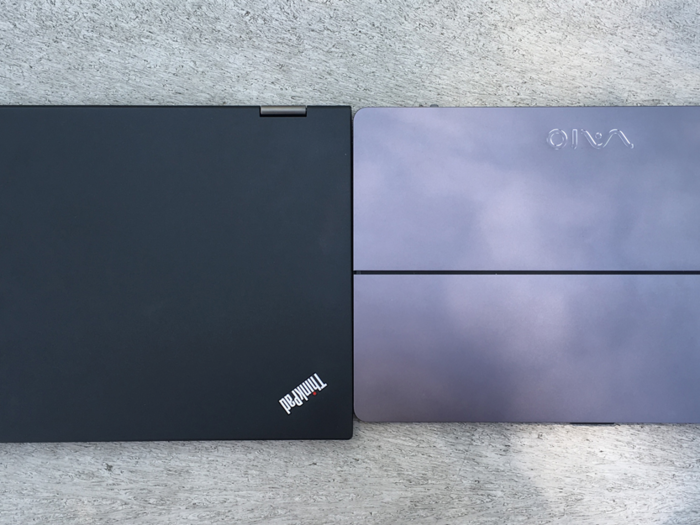
If anything holds these two back, it’s that they each have cheaper variants that work in much the same way. The Yoga has the ThinkPad X1 Carbon, the Vaio Z Flip has the Vaio Z. The latter trades away some performance, but for most people, all you really lose is the ability to flip the screens around.
If you’re shopping for a MacBook Pro alternative, though, that flexibility is part of the appeal. In the Yoga’s case, so is the keyboard and durability. In the Vaio’s, so is the power and display. In both cases, so is the size. (Or lack thereof.)
Ultimately, I think most people should wait until Apple shows us what it’s got. If you’re a Windows loyalist, though, the Yoga is the more utilitarian, business-friendly machine, while the Vaio is as luxurious as Windows laptops get. Either way, you shouldn’t feel too compromised.
Popular Right Now
Popular Keywords
- India’s wearables market decline
- Vivo V40 Pro vs OnePlus 12R
- Nothing Phone (2a) Plus vs OnePlus Nord 4
- Upcoming smartphones launching in August
- Nothing Phone (2a) review
- Current Location in Google
- Hide Whatsapp Messages
- Phone is hacked or not
- Whatsapp Deleted Messages
- Download photos from Whatsapp
- Instagram Messages
- How to lock facebook profile
- Android 14
- Unfollowed on Instagram
Advertisement